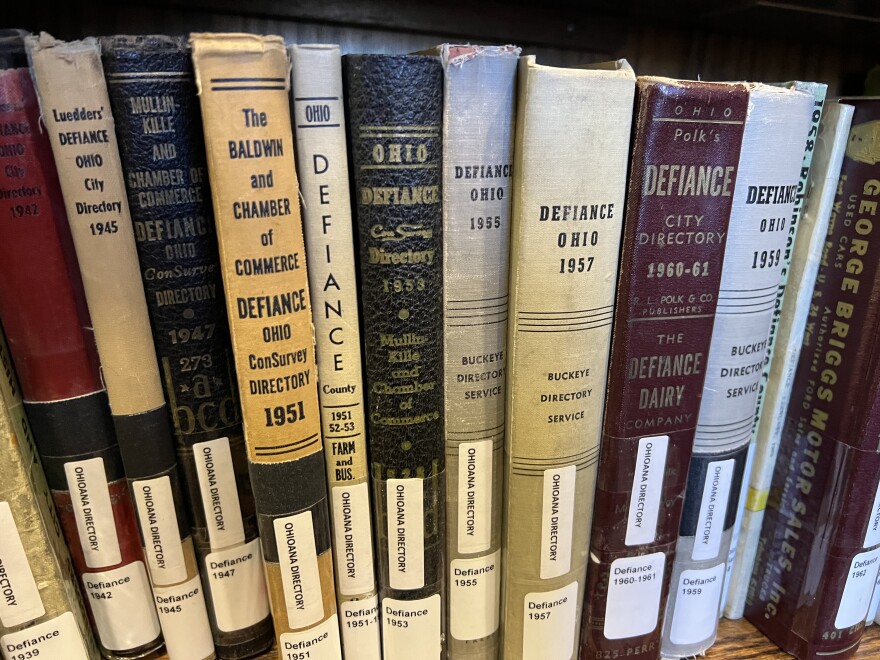On the surface, there is nothing special about the dirt field Sarah Marshall is standing next to, just outside of Defiance. It sits off a country back road, empty and unmoving, like any other soybean field in northwest Ohio awaiting planting.
But, Marshall, adult services associate at the Defiance Public Library, knows better.
“It's probably a football field lengths back from where we're standing now,” Marshall said, pointing from across the road, as trucks whiz by. “You can kind of see a rise in the field there.”
That small rise is a resting place. The cemetery was owned by Archibald Worthington, a former slave who moved from Virginia to Ohio in the mid-1800s. As a free man, he acquired wealth, land and apprentices. And he created a designated burial place for Black people in Defiance County.
“At that time they couldn't be buried anywhere else. So this was an important thing for that community that lived out there,” Marshall said.

Ohio was an important part of the Underground Railroad, a stop on the passageway to freedom in the early 19th century. And for many Black people, the state wasn’t just a part of the journey, it was their destination. They built homes, farmed land, raised families.
But, in northwest Ohio, few reminders of their legacy remain.
Uncovering Worthington’s story
From the road, it’s impossible to know the cracked dirt and remnants of roots is a burial ground. The stone markers that celebrated their lives are long gone, moved by the farmers that followed.
Marshall didn’t think that was right. She said she wanted to do what she could to reverse the damage done and preserve the stories of the people buried there.
So she teamed up with another library employee, Renee Hopper, to piece together his story. They sorted through census reports, consulted local historians and archaeology students, and even brought a K-9 unit onto the site to confirm the cemetery’s location. Together, Marshall and Hopper compiled a history of Archibald Worthington to share with the community.

Hopper said every new bit of history they uncovered increased their urgency to have Worthington remembered.
“One thing I always do, whenever we walk out there, whether they can hear me or not, [I tell them], ‘We're here to help people remember you,’” Hopper said.
Ohio’s early Black settlers
Worthington Cemetery is likely just one of many African American cemeteries across rural Ohio that has been lost, said Case Western Reserve University assistant professor of history Noël Voltz.
“We're talking about hundreds of black people. They're buried somewhere,” Voltz said. “But many of them will have been destroyed, unfortunately, because they weren't valued.”

By the 1860s, Ohio had thousands of Black settlers. Many were former slaves, like Worthington, migrating from southern states to seek a better life. They traveled together, building their own communities across rural Ohio.
“We talk about Black Cleveland or Black Cincinnati, but it's actually rural life that very much defines Black life in the Midwest and in the Great Lakes region [at that time],” she said.
Today, Defiance County is nearly 95% white. Voltz said that’s not a coincidence. Discrimination and violence drove Black people from their homes. She speculates it could be part of the reason that Worthington ultimately left his Ohio home – and the burial place he planned for himself – behind.
“They're often times called the vanishing black communities of northwest Ohio,” Voltz said. “By the 1870s, many of the Black folks that are living there are going to be pushed out through race riots.”
Reversing the damage
Black people played an important part in shaping northwest Ohio. Through Marshall’s deep dive into historical records, the library employee discovered that Worthington was not just a successful farmer. He actively shaped the landscape, helping to dig the ditches that still surround the country road to this day. Later, he served in the Union Army during the Civil War.

And she was able to share some of her findings with Victoria Gray, a descendant of Worthington. After Marshall reached out to her, Gray was inspired to trace her ancestry and learn more about her family’s past.
“It's incredible that there was a Black cemetery [there]. And it's sad that it was desecrated in a sense,” Gray said. “But the fact that it did exist at one time is a sense of pride.”
She wants her ancestors’ stories, like Worthington, to be preserved for younger generations. A historical marker will help with that. Thanks to Marshall and her team’s research, the Ohio History Connection awarded the site with an official marker that will tell Worthington’s story.
“School buses will go by and the children will see these markers and the people in the community will see them and hopefully bring their families, read what's on them. Read a part of their history that's always been there, but they didn't really know about,” Marshall said.

It will take some time until the marker is created and put in place. But already, Marshall’s research into Worthington has spurred action. A community group, the Friends of Worthington Cemetery, hopes to fundraise enough money to buy the land from the local water district and ensure it remains unfarmed in the future.
It would be open for people like Gray to come pay their respects. She lives in Florida, but she plans to come to northwest Ohio for the first time for the dedication of the historical marker on the edge of the field where her great-great-grandfather made Ohio history. She wants to host a family reunion there.
It will be a celebration of her ancestors’ lives that, in her words, is long overdue.


